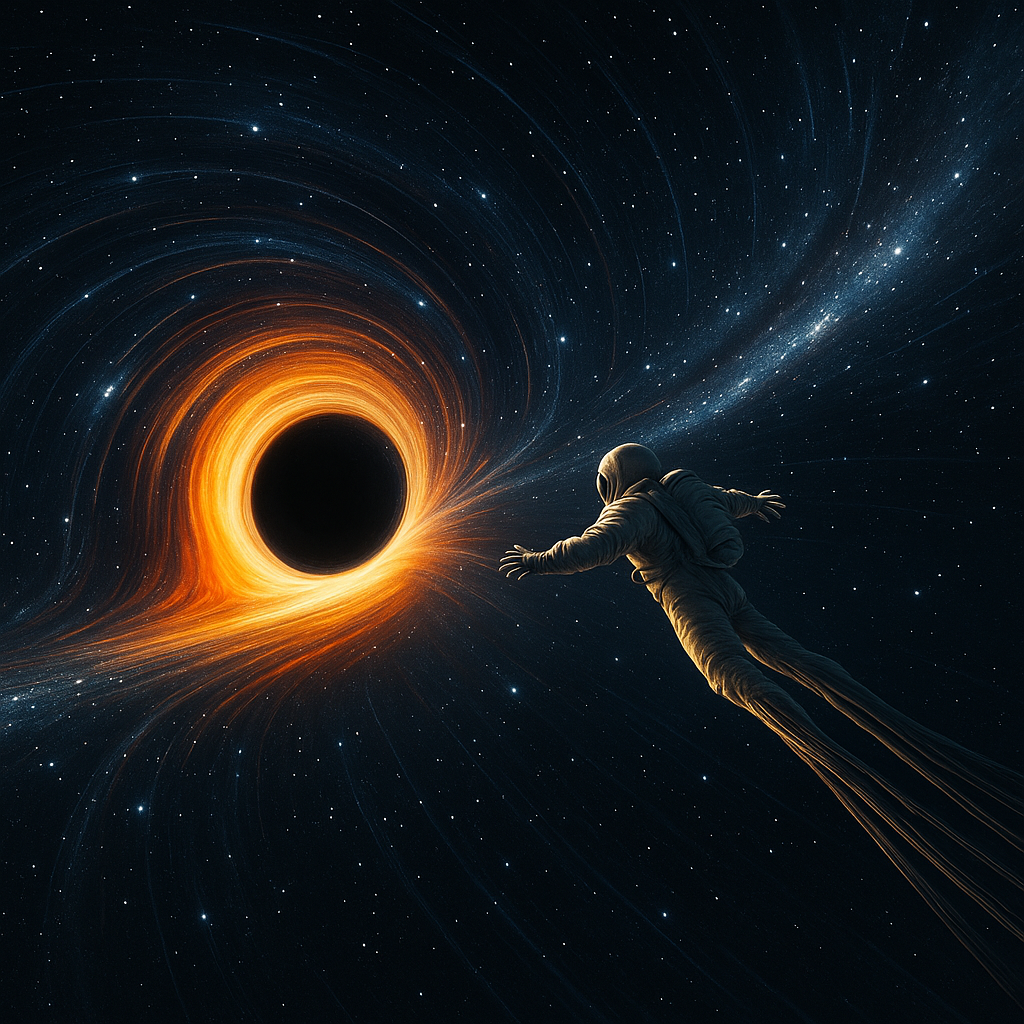Imagine hurtling towards an object so powerful that not even light can escape its pull. No matter how much you resist, you’re drawn ever closer, swallowed by an abyss from which there is no return. This is the fate that awaits anyone falling into a black hole — and yet, the experience would be more bizarre and more horrifying than most can imagine.
In his latest book “Facing Infinity: Black Holes and Our Place on Earth” (The Experiment, 2025), physicist and science writer Jonas Enander takes readers on a captivating journey through the history and science behind the universe’s darkest mysteries — black holes. From a mountaintop observatory in Hawaii, where astronomers captured the first-ever image of a black hole, to a World War I battlefield in France where one of astrophysics’ most important equations was first imagined, Enander follows the footsteps of Nobel laureates and visionary thinkers. Through their stories, he transforms these colossal cosmic enigmas into something deeply human and profoundly connected to our own place in the universe.
What is a Black Hole?

Black holes are regions in space where gravity becomes so intense that not even light can escape their grasp. Air, light, matter — all disappear beyond the boundary known as the event horizon. As Enander emphasizes, the darkness we see is not simply the absence of light, but the end of knowledge.
In our own galaxy and beyond, black holes serve as the anchoring points of cosmic structure, sculpting how stars form and how galaxies evolve. Their profound influence and mysterious nature make them one of the greatest puzzles in astrophysics.
Approaching the Point of No Return
As you draw nearer to a black hole, the first thing you notice isn’t pain — it’s the change in your surroundings. You float in space, devoid of up or down. The starfield around you warps and fragments as you approach the abyss.
You see the darkness ahead growing, enveloping more of your view. There’s no sign marking the boundary, no sudden alarm. Once you cross the event horizon — the invisible boundary — escape becomes impossible. The laws of physics as we know them break down at the singularity.
The Visual Distortion: Light Warped and Multiplied

What you experience visually is far from what we’d imagine. As you approach, you witness the stars behind you and around you being pulled and bent by intense gravity. Light doesn’t travel in neat straight lines — it bends, loops, and duplicates. You may see phantom stars, multiple images of the same star, and brighter arcs of light as gravity compresses and redirects photons.
This visual distortion is a signature of the black hole’s immense gravitational lensing. The darkness ahead seems to grow swiftly, swallowing more of your field of view. It’s a hallucination of physics — but it’s real for whoever falls in.
Spaghettification: The Stretching of Your Body
The more you fall in, the more your body will experience extreme tidal forces. Gravity at your feet is far stronger than at your head (assuming feet-first entry), so you’ll be stretched out like spaghetti — a process formally called “spaghettification.”
What’s surreal is that this tearing apart happens almost silently. Your bones, tendons, cells and DNA are stretched, but you might feel only a brief flash of pain before oblivion — because time becomes distorted near the singularity. Your body dissolves into the fabric of space-time itself.
Time, Perspective and the Tragic Unobservability

From your perspective falling in, time warps. To an outside observer, you might appear to slow down, fade, freeze at the event horizon. But to you, the fall may happen in just hours (for a super-massive hole) or even seconds (for a stellar-mass one).
What’s more tragic: once you’ve crossed that line, you cannot send a signal. Communication ends. There’s no turning back. You become separated from the universe you knew. Your tale ends before it even begins for anyone else.
The Greater the Black Hole, the Gentler the Entry (Sort of)
It might seem counter-intuitive, but if you fall into a super-massive black hole (say one the size of our solar system), you could cross the event horizon without immediately being torn apart — in some cases you may experience the crossing almost painlessly.
However, surviving much beyond that is impossible. Inside you still head toward the singularity, where all mass collapses to infinite density and space and time warp beyond comprehension. The size of the hole determines how quickly lethal forces accumulate.
Why We Study These Cosmic Monsters
Black holes push the boundaries of our understanding of physics. They force us to reconsider gravity, quantum mechanics, space and time themselves. By studying black holes, astronomers and physicists are probing the limits of what the universe allows.
Beyond theory, black holes influence galaxy formation, star life-cycles and the cosmic web at large. Understanding how they function (and how they end) offers insight into the universe’s past, present and eventual fate. They are not just curiosities — they are central to cosmic evolution.
The journey into a black hole is not just a fall into darkness — it’s an obliteration of self, perspective and physics as we know them. For the unfortunate traveler, the experience is dazzling yet fatal, violent yet silent, final yet ineffably mysterious. While we may never actually send a human into a black hole, exploring the theoretical “what if” helps us deep-dive into the universe’s most extreme frontier. The darkness isn’t just absence — it is the ultimate boundary of knowledge.

Hi, I’m Andrew, and I come from India. Experienced content specialist with a passion for writing. My forte includes health and wellness, Travel, Animals, and Nature. A nature nomad, I am obsessed with mountains and love high-altitude trekking. I have been on several Himalayan treks in India including the Everest Base Camp in Nepal, a profound experience.


